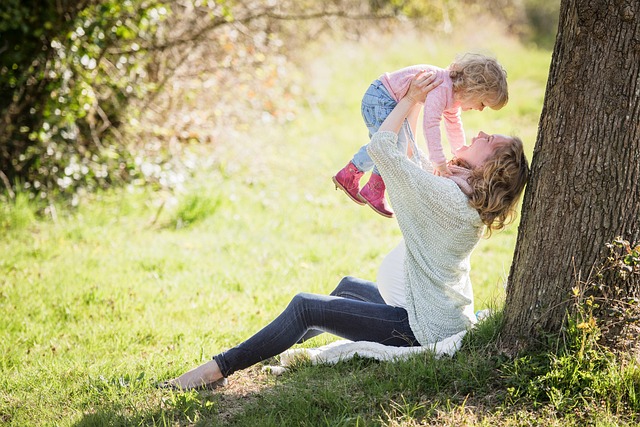Parenting Insights: Embracing Individuality
Today’s weather was simply delightful—a refreshing 65 degrees with a cloudless sky that seemed to stretch endlessly. With our sturdy red wagon in tow, I gathered a selection of sippy cups and snacks and herded my two children, a boy and a girl, into the car. My son has just turned three, while my daughter is nearly two; both are spirited in their own ways—sensitive and sassy, respectively. We set off for the zoo, joined by hundreds of others eager to enjoy the sunshine.
As my youngest savored the gentle ride in the wagon, my son confidently approached each animal enclosure, gazing intently through the bars. Just yesterday, he clung to my leg at the occupational therapist’s office, a timid presence seeking comfort before a screening prompted by his well-meaning preschool teachers who believed he may not be ready for the next step.
My son, with his warm honey-colored eyes that light up at the sight of tigers, lions, and giraffes, is incredibly sensitive and often exhibits behaviors that some might categorize as overly babyish. Although he celebrated his third birthday just two months ago, at home, his immediate reaction to any minor frustration—be it a dropped cookie or an unexpected glance from his sister—often manifests as whining or tears.
At school, however, he surprises me. He asks for a hug, assures me he’ll be fine after lunch, and then steps into the classroom. He’s the reserved child who doesn’t cry or snatch toys from others. He engages with peers, yet he’s primarily drawn to the train tables, the playground, and the storybooks. During circle time, when called upon, his entire demeanor shifts; he seems to shrink within himself, transforming from a butterfly into a caterpillar. He freezes, his muscles tense under his shirt, his expression vacant.
I observed this phenomenon during circle time one day. “Come up here,” a teacher gently encouraged. He remained still, perhaps hoping to evade attention. “Please stand up,” she prompted again. He moved slowly, almost like a character from a Charlie Brown cartoon. When asked to pick up a yellow triangle and place it on the board, he froze once more. My heart raced as I watched from a distance, silently urging him to comply. “Just do it! You know this!” I mentally pleaded.
After several prompts, he finally picked up the shape, but his feet seemed glued to the ground. “Put it on the board,” the teacher instructed. Eventually, he complied, only to return to his seat with a slumped posture, visibly relieved as the focus shifted away from him.
I know my child well, as I spend nearly all my time with him outside of the eight hours he spends at Mother’s Day Out. His teachers don’t witness his emotional struggles; they overlook how shy and sensitive he truly is. They fail to recognize his reluctance to be the center of attention, likely compounded by having a younger sister who has taken some of the attention he once received. Yet, he has his own pace, one that may not align with typical developmental timelines.
Thus, we ventured into occupational therapy—a neutral space for assessment. Once I managed to persuade him to leave my side, he sat in a small chair. The therapist, with her gentle demeanor, handed him a crayon and asked him to color. Although a left-hander, he awkwardly held the crayon in his right hand, nervously resting his left arm across his forehead as he timidly dotted the page.
I watched once more, anxious as I bit my lip, willing him to embrace the task. He was presented with various activities—cutting, drawing, identifying objects—many of which he struggled with. The therapist compassionately provided a list of areas for improvement, mentioning “mildly developmentally delayed” based on her observations.
“Does a just-turned three-year-old really need to use scissors?” I questioned. Is this truly necessary?
But today is different. Today at the zoo, amidst the joyful throngs of children marveling at the slow-moving animals under the bright sun, my son blends in with the crowd. He appears just like any other child, filled with wonder and excitement. Do the other kids harbor their own hidden challenges?
Children have a unique way of touching their parents’ hearts, often in ways that can be painful. Yet today, I find healing in the atmosphere—the vibrant colors, the gentle breeze, and, most importantly, in the warm hugs and “I love you’s” from my sweet little boy, whose unruly curls dance in the wind.
In this moment, I recognize the beauty in my “imperfect” child, who is perfect in his own right.
For those exploring the journey of parenthood, consider checking out this guide for home insemination kits. It’s an excellent resource for both information and support. Additionally, for those interested in enhancing fertility, this fertility booster for men is a credible option. And for expectant parents, the March of Dimes offers invaluable insights into pregnancy week by week.
In conclusion, while every child may have their challenges, it is essential to celebrate their unique qualities and embrace the journey of parenthood with love and understanding.
